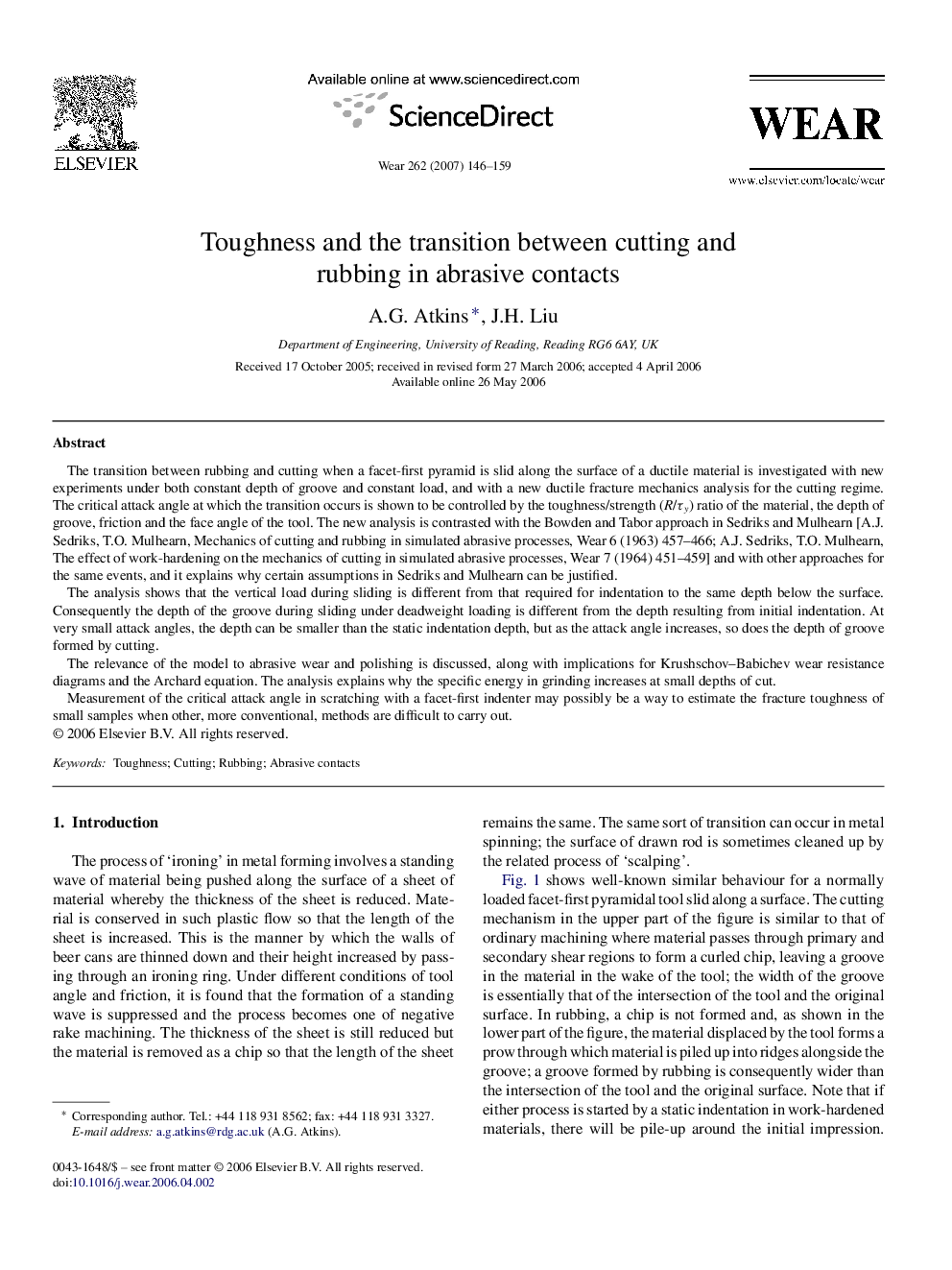| Article ID | Journal | Published Year | Pages | File Type |
|---|---|---|---|---|
| 619492 | Wear | 2007 | 14 Pages |
The transition between rubbing and cutting when a facet-first pyramid is slid along the surface of a ductile material is investigated with new experiments under both constant depth of groove and constant load, and with a new ductile fracture mechanics analysis for the cutting regime. The critical attack angle at which the transition occurs is shown to be controlled by the toughness/strength (R/τy) ratio of the material, the depth of groove, friction and the face angle of the tool. The new analysis is contrasted with the Bowden and Tabor approach in Sedriks and Mulhearn [A.J. Sedriks, T.O. Mulhearn, Mechanics of cutting and rubbing in simulated abrasive processes, Wear 6 (1963) 457–466; A.J. Sedriks, T.O. Mulhearn, The effect of work-hardening on the mechanics of cutting in simulated abrasive processes, Wear 7 (1964) 451–459] and with other approaches for the same events, and it explains why certain assumptions in Sedriks and Mulhearn can be justified.The analysis shows that the vertical load during sliding is different from that required for indentation to the same depth below the surface. Consequently the depth of the groove during sliding under deadweight loading is different from the depth resulting from initial indentation. At very small attack angles, the depth can be smaller than the static indentation depth, but as the attack angle increases, so does the depth of groove formed by cutting.The relevance of the model to abrasive wear and polishing is discussed, along with implications for Krushschov–Babichev wear resistance diagrams and the Archard equation. The analysis explains why the specific energy in grinding increases at small depths of cut.Measurement of the critical attack angle in scratching with a facet-first indenter may possibly be a way to estimate the fracture toughness of small samples when other, more conventional, methods are difficult to carry out.
